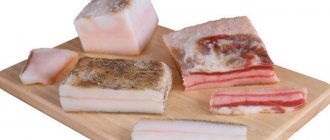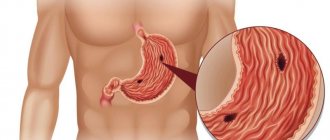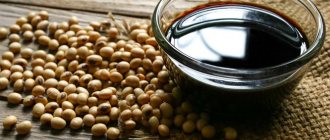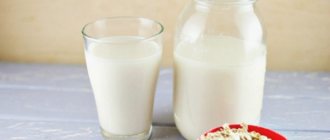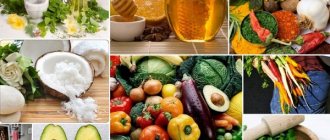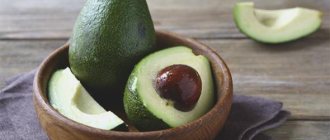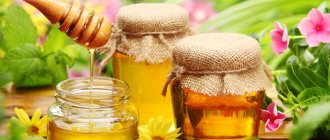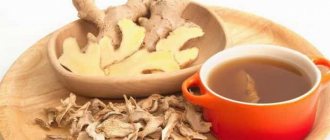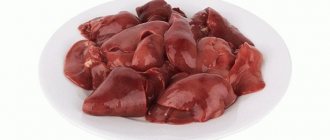Ulcerative damage to the walls of the stomach and duodenum is a serious, dangerous disease of the gastrointestinal tract. An ulcer is diagnosed by a characteristic symptom, such as cutting, cramping and sharp pain in the stomach that occurs after eating. To relieve pain, doctors resort to diet therapy, avoiding many foods that cause discomfort. Therapeutic nutrition is developed individually, but the basis of most diets are dairy and fermented milk products. They should be fresh and natural, with a low fat content. Dairy cuisine is prescribed to ulcer sufferers in order to restore strength and replenish lost vitamins and minerals, to accelerate the healing of wounds on the mucous membranes.
Causes of stomach ulcers
A high level of stress, improper and uneven food consumption - all this can lead to a pathology that causes suffering, requiring a special diet, restrictions not only in the consumption of food, but also in drinks.
With a sufficiently large amount of fluid drunk per day, recommended by doctors, a patient with peptic ulcer disease is forced to take a responsible attitude towards its quality and quantity.
In order to avoid complications and relapses, everyone suffering from pathological ulceration in the mucous membrane must know what is acceptable and what is not, and scrupulously follow certain requirements for their diet.
Stomach ulcers are the result of irresponsible consumption of alcohol-containing drinks, coffee, poor diet, abuse of sour, rough and spicy foods.
Its development is facilitated by long breaks between meals, hereditary factors and stressful conditions. The chronic process, which is the result of nutritional disorders, requires the patient to strictly adhere to the regimen of taking nutrients, selecting and limiting their quality and quantity.
How to make kefir for ulcers at home yourself
On the Internet you can find information about the sale of kefir mushrooms. Their price is about 100 rubles per 1 teaspoon or tablespoon. When purchasing, you should choose a young fungus. It looks like grains of cooked rice. The color of the fungus is white. Size – 4-7 mm. One spoon will be enough to quickly grow enough of them to be enough for all your friends and acquaintances. As it matures, the mushroom grows and becomes a ball with an uneven surface, similar to a head of cauliflower, up to 6 cm in diameter.
Technology for making homemade kefir:
- carry out pasteurization - heat the milk to 78 °C, then quickly cool to 37 °C;
- pour into a glass jar;
- add the fungus at the rate of 1-2 teaspoons per 250 ml of milk, close the jar with a tight lid;
- wrap in a towel and leave in a warm place - it is important to maintain the temperature;
- depending on the quantity, type of fungus, milk fat content and temperature, kefir will be ready in 12–24 hours;
- strain the resulting product through a fine colander;
- Carefully rinse the fungus that has settled in a colander with warm water (not boiling water!), put it in a glass jar and fill it with a new portion of fresh pasteurized milk at a temperature of 37 ° C;
It is better to drink homemade kefir on the day of preparation.
Kefir grains should always be in milk. Without it, he quickly dies. If you need to interrupt the daily production of homemade kefir, then to preserve the fungus it should be placed in the refrigerator.
The question often arises: is it necessary to pasteurize milk before introducing the fungus? Owners of cows and goats do not do this, being confident in the health of their charges. If milk is obtained from a healthy, vaccinated animal, then it can be fermented raw. This kefir will be even healthier. If milk was purchased from strangers, it is better to play it safe and pasteurize or boil it.
Diet for stomach ulcers
Diet therapy for gastric and duodenal ulcers, along with medication, is one of the main methods of treatment. A person who has been destroying his health for a long time by irresponsibly consuming harmful, irritating, destructuring products is now required to avoid them in every possible way.
Any food that causes increased secretion of gastric juice, that can cause mechanical damage to the mucous membrane, or increase the level of acidity, is excluded from the diet.
A patient experiencing pain during attacks gets used to studying the effects of consumed foods on the secretory mechanisms of digestion, remembers that they can become a source of pain and provoke destructive processes.
A sharp restriction of permitted foods is sometimes beyond the power of those who like to eat a lot and tastefully, drink a glass or two before dinner and not only, and generously season fatty and hot foods with seasonings. Violation of the diet inevitably leads to a new attack, new excruciating pain, negative sensations that deprive a person of the normal life process.
A stomach ulcer involves avoiding food that is coarse, spicy, salty, causing increased secretion of gastric juice, hot and cold, smoked and fried.
The course of the disease, in which food must be consumed boiled or steamed, pureed, and warm, in small portions at short intervals, with scrupulous calculation of calorie content, vegetable fats, is tiring and uncomfortable for a previously healthy person.
The diet is designed to promote the healing of the resulting pathology. Restriction in food creates the need for frequent and abundant fluid intake. But even in the choice of drinks, a regime of selectivity sets in, caused by their ability to influence the secretion of gastric juice, secretory activity, and the intensity of the digestion process.
The choice of permitted drinks is dictated by the same strict need to speed up the healing process of the pathology, which, with further progression, can lead to extremely negative consequences.
The benefits of kefir and other fermented milk products
Kefir is a healthy product for the body, made using a special starter based on lactic acid fungus. It contains a large number of useful, biologically active substances, microelements and vitamins.
Kefir has a specific sour taste, and its acid level can vary significantly. People suffering from disorders of the digestive system often wonder whether it can be consumed.
To answer this question, you need to understand what this drink is.
Most often, kefir is produced by fermenting cow's milk with a special starter. It contains about 300 strains of lactic bacteria and 30 types of yeast, which belong to 6 different groups. Moreover, all microorganisms are in a favorable symbiosis with each other and, in their characteristics, are close to the bacteria that are part of the natural microflora of the human digestive tract.
Kefir first appeared in the Caucasus; its very name has Turkic roots (“kef” in Turkish means “health”).
The production of a drink that gives the body strength, vigor and health was kept secret for a long time. Kefir grains were considered a gift from Allah himself. An interesting fact in the life of the highlanders is that the bride had to “steal” the sourdough from her parents - without it, the dowry was incomplete. The ritual of “theft” was thought out and planned down to the smallest detail. At the same time, if a girl married a stranger or went to live in distant villages, then she was deprived of the opportunity to take leaven with her.
The reason for such secrecy was the legend that the peoples of the Caucasus believed in. According to it, in ancient times, the prophet and messenger of Allah Magomed came to Mount Elbrus and he really liked the people living there. To gift them, he took out several peas from his staff and taught them how to use them to make an extraordinary drink that gives health and long life. However, the condition was not to tell strangers about the magical drink so that it would not lose its power. The mountaineers called kefir grains “the millet of the Prophet” or “the grains of Magomed.”
No less interesting was the method of making kefir. On the path leading to the house, always in a sunny place, a tied wineskin with fresh milk and kefir grains added to it was placed. Everyone who passed by had to push the wineskin with their foot - this was an expression of respect for the owner of the house. Shaking the contents caused violent fermentation.
In Russia, an unusual drink with healing properties became known in the mid-19th century. Russian soldiers, participants in the war in the Caucasus, were able to recognize the taste of kefir. They said that it was made from milk, tasted good and was a little intoxicating. After this, kefir began to be imported to Russia and sold very expensively. But they began to produce it only in 1908.
The history of the beginning of the production of fermented milk products in Russia is very unusual. Irina Sakharova, an employee of a Moscow dairy plant, was sent to the Caucasus to get lactic acid fungus there.
Together with engineer Alexander Vasilyevich Vasilyev, the twenty-year-old smart and beautiful Irina arrived in Kislovodsk, where they were invited to stay at the summer home of a wealthy local aristocrat, Prince Baicharov, the owner of a large production and supplier of kefir to Moscow. A carriage was provided, and the guests went to the prince’s summer residence on the banks of the Korsunka River.
For a whole month, Moscow guests were treated to national dishes and wines, entertained with songs and dances, shown hospitality and presented with gifts. But they were unable to get kefir grains. As soon as Irina asked the local residents about him, they seemed speechless and just silently shook their heads. To all requests for at least a little leaven, they answered that it was sacred and was not passed on to strangers. So the dairy plant workers had to leave with nothing.
The carriage was slowly moving towards Kislovodsk so that Sakharov could board the train and return to Moscow, when suddenly five horsemen caught up with her. One of the riders grabbed Irina, threw her over the saddle and took her to the mountains. Frightened, Vasilyev rushed to the gendarmerie for help, and Irina was taken to a cave, where luxurious treats and an old Karachay woman awaited her.
She told Irina that Prince Baicharov himself kidnapped her to propose. At that moment the prince himself arrived and offered to become his wife. Then the gendarmes arrived and arrested Baicharov. At the trial, Irina said that she would forgive the prince if he gave her 10 pounds of sourdough as a payoff. In the morning, Sakharov received from the prince a luxurious bouquet of flowers and the treasured mushrooms.
Irina understood how great the prince’s wealth and influence were. Afraid of losing the precious leaven, Sakharova disguised herself as a beggar and, hiding the loot in rags, returned to Moscow. She made the first kefir herself - poured milk into glass bottles, added fungus, and put it in the thermostat. Day and night she shook them and turned them over with her own hands. I washed the fungus only with boiled water, being afraid to even touch it with my hands to avoid damage.
The first kefir was used to treat patients at Botkin Hospital, then it appeared on store shelves. Russia later patented the production of kefir.
However, so far it has not been possible to create an analogue to an amazing natural formation - kefir fungus. Artificial substitutes, although they do something similar, do not contain even a thousandth of the benefit that natural sourdough brings.
Video: What you can and cannot eat if you have a stomach ulcer: list of foods
Milk for stomach ulcers
It is not only possible, but also necessary to consume dairy products for stomach ulcers. This forms the basis of a therapeutic diet.
Refusal of most of the previously favorite components of food forces a person to drink plenty of milk, as the main drink that can stimulate the activity of the immune system.
Milk, which contains water, a vitamin-mineral complex, proteins, carbohydrates and fats, nourishes and supports the sick body, supplies it with the necessary substances, stimulates the production of necessary hormones and enzymes.
Calcium and phosphorus, metonin, lysine and tryptophan - all these are components vital for the healing and regeneration of a damaged stomach, rehabilitation of the body weakened by disease.
Milk not only speeds up the treatment of inflammation, but also activates gastric motility and alleviates negative symptoms.
Other dairy drinks should be consumed with some precautions:
- Kefir is prohibited 1 week after an exacerbation, but during the period of remission it can be drunk instead of a snack, in the interval between 2 meals. This is a highly digestible product that supplies the body with biologically valuable components.
- The serum is low in calories, but has the ability to remove waste and toxins, contains valuable proteins, a rich vitamin and mineral complex, and is recommended for daily use.
- People drink natural (“live”) yogurt, in this form it suppresses the growth of spiral-shaped bacteria, which provokes the development of peptic ulcers. It is recommended for consumption only a low-calorie product, with a minimum content of dyes and flavors.
- Ryazhenka and yogurt are also included in the treatment menu, but due to their high fat content, their use is recommended in limited quantities.
Goat milk for peptic ulcers must be diluted with water.
Dairy products and milk-based dishes, in particular milk jelly, are not only healthy, but also highly recommended drinks.
When and how much to use
Stomach disease is not a contraindication for consuming fermented milk products - but you need to know exactly when and how much kefir is recommended to drink. It is an independent food and cannot be combined with other food products - fish, chicken or quail eggs, meat, beets, carrots, other vegetables and fruits. Best served as a separate dish.
One-day kefir is considered the best option for patients with pathologies of the digestive system. It is not recommended to drink a drink with added granulated sugar, as this can cause unpleasant consequences in the form of flatulence or fermentation in the intestines. To improve the taste of the sour product, you can add a spoonful of honey.
You can add a spoonful of honey to the drink
If a person is bothered by severe abdominal pain, drinking kefir with a teaspoon of unrefined olive or sunflower oil will be useful. It is best to drink the drink at night, 1-2 hours before bedtime. It gently envelops the mucous membrane of the stomach and duodenum, eliminating painful spasms and discomfort.
Kefir, fermented baked milk, whey and other dairy drinks should not be drunk on an empty stomach; the best option would be to drink it an hour after a meal. The initial amount of product is 100-150 ml. In the absence of bloating and other unpleasant consequences, the dosage is increased to 300-350 ml per day.
Kissels, compotes, juices: recommended or limited
Kissel is an undeservedly forgotten drink that was previously popular; in liquid form it can be consumed in unlimited quantities in case of illness.
Kissel for stomach ulcers not only helps reduce acidity, but also facilitates the digestion process, gives a quick feeling of fullness, which significantly reduces the load on diseased organs.
Milk, blueberry, oatmeal, rosehip, apple, raspberry, bird cherry, black currant, pumpkin, oatmeal jelly - all this can be drunk daily, enjoying it, while bringing considerable benefits to the body.
Compote can be made from raspberries, currants, strawberries, sweet varieties of apples, with the obligatory addition of sugar.
Any fruits that can increase the acidity of the stomach are also prohibited for consumption, as are natural juices from them. Juices are products containing vitamin and mineral complexes, but not all of them are applicable.
Before buying juices for a patient with a peptic ulcer, you need to consult a nutritionist about what juices you can drink if you have a stomach ulcer.
He will tell you which of them are allowed to drink for this disease.
What can you safely drink if you have a stomach ulcer?
Absolutely allowed:
- pumpkin (no restrictions);
- potato;
- viburnum;
- strawberry;
- blackcurrant (in limited quantities);
- carrot (no more than a glass, with the addition of vegetable oil);
- cabbage (possibly only mixed with other juices).
All others, as containing acids and stimulating digestion, are prohibited for use during this disease. Allowed options can be drunk no more than a glass, half an hour before meals.
Beneficial features
Before considering the benefits of kefir, let's figure out what it is. Kefir is a fermented milk product produced using a special starter culture from fungi and milk. Natural kefir is healthy and dietary; it contains vitamins, organic acids, microelements, and probiotics.
In this regard, this fermented milk drink has the following properties:
- elimination of hypovitaminosis;
- improved digestion;
- strengthening the immune system;
- acceleration of metabolic processes;
- normalization of the central nervous system and sleep.
In addition, full-fat kefir has mucosal-enveloping properties.
Contraindications
Kefir should be excluded from the diet if a stomach ulcer worsens. You should use this drink with caution in case of high acidity - only one-day kefir is allowed in small quantities. Completely exclude it from the diet only if you are individually lactose intolerant.
It is not recommended to consume fermented milk products for those who suffer from indigestion. You can drink kefir if the drink is no more than 3 days old. After exceeding this period, a large proportion of beneficial bacteria disappears in it, and it can do more harm than good, since it has a fixing effect and is capable of causing fermentation.
When making a diagnosis, in any case, the presence of kefir in the diet should be agreed with a doctor in order to avoid negative consequences.
Principles of dietary nutrition.
- Eat small meals every three or four hours. Your stomach will not be full and will be able to digest food on time.
- The approximate number of meals per day is 6 times.
- Eat pureed foods and remove tough skins from fruits. Large pieces of food are not allowed, as it will be difficult for the stomach to digest them.
- I recommend diluting juices with water and replacing sugar with honey. Honey is considered a mild food that helps cure ulcers.
- Monitor the temperature of your food.
- Therapeutic nutrition for ulcers prohibits eating too hot or cold foods. Salt your food less.
- The maximum dose of salt for patients with ulcers is 10 g per day.
- Include more vitamins and beneficial minerals in your diet. The diet lasts from ten to twelve days.
- It is recommended to boil or steam food. The energy value of food should be approximately 3000 kilocalories per day.
- Add butter and vegetable oil to your food. Oils, like animal fats, provide faster healing of intestinal ulcers.
Which drink is beneficial?
Due to the fact that biological ferment is used in the production of the drink, the properties of kefir depend on the level of maturation of the product. In the diet of a patient with a stomach ulcer, the drink should be a one-day drink.
It is very light in composition and does not have an irritating effect on damaged areas of the organ mucosa. You can drink the one-day drink as a mild laxative, as it gently helps relieve constipation and helps cleanse the body of toxins.
Three-day kefir contains carbon dioxide, which provokes the synthesis of gastric juice, and this drink has a strengthening effect.
